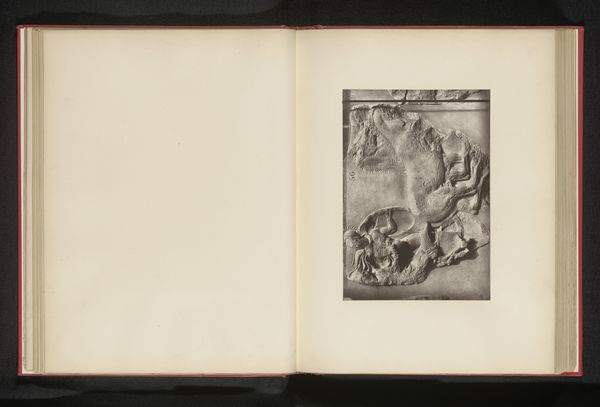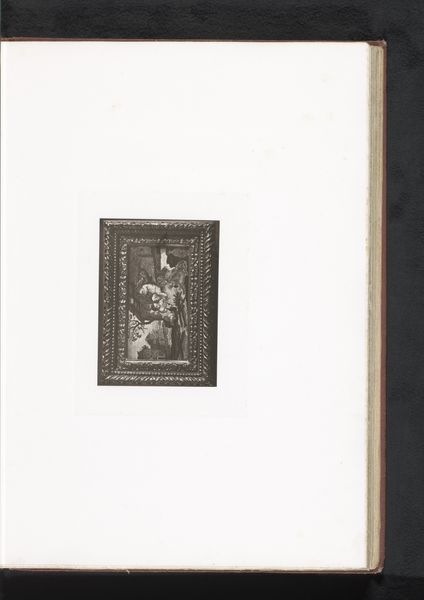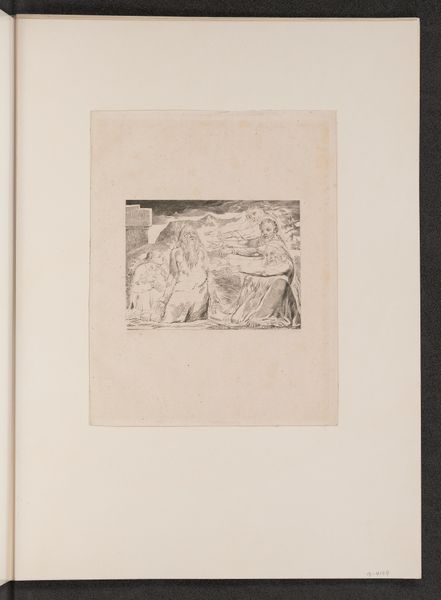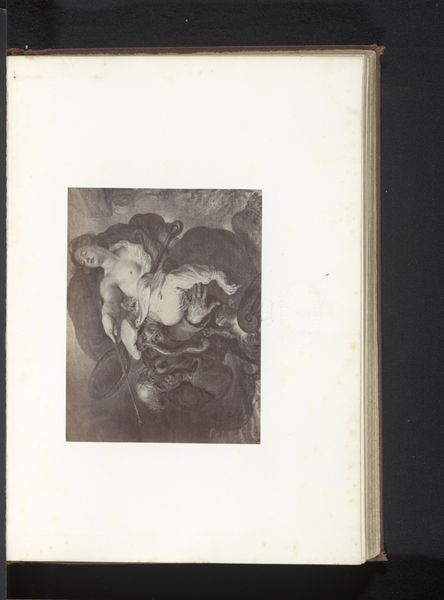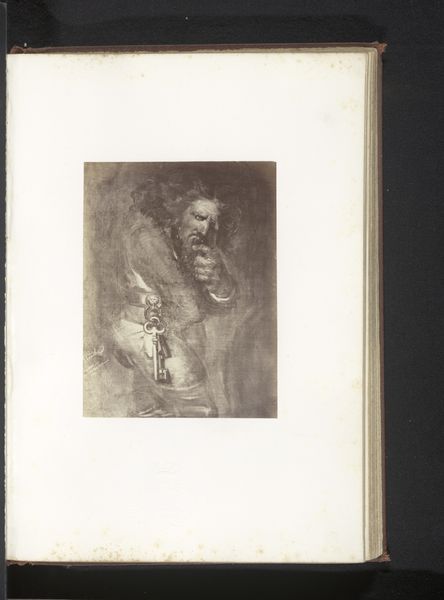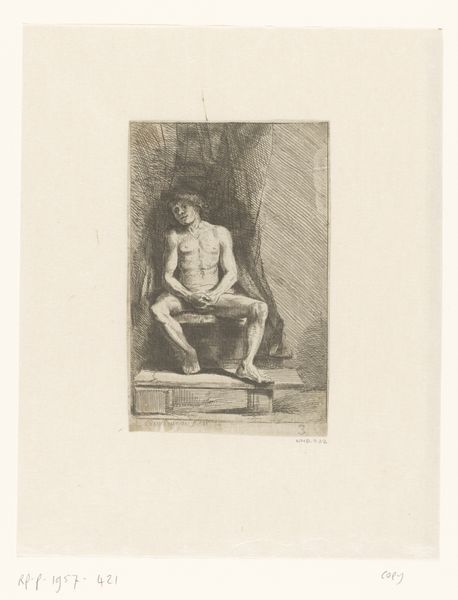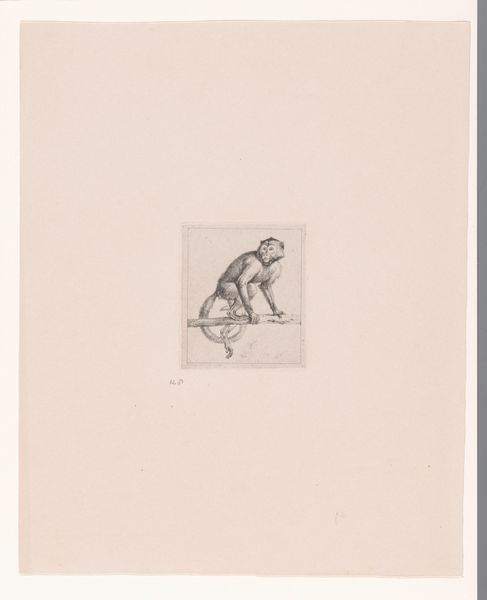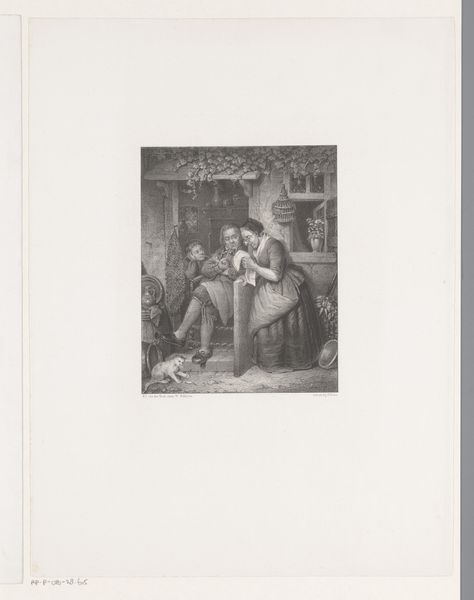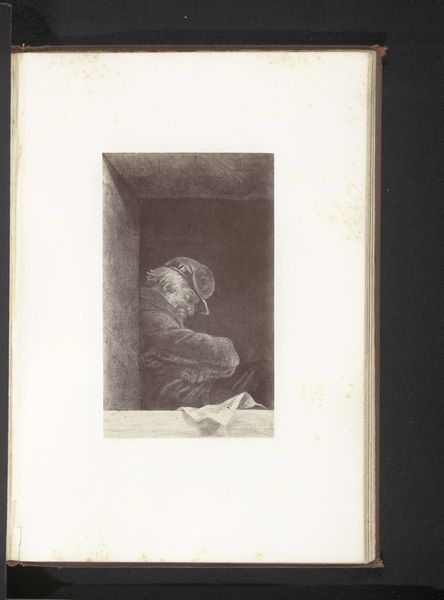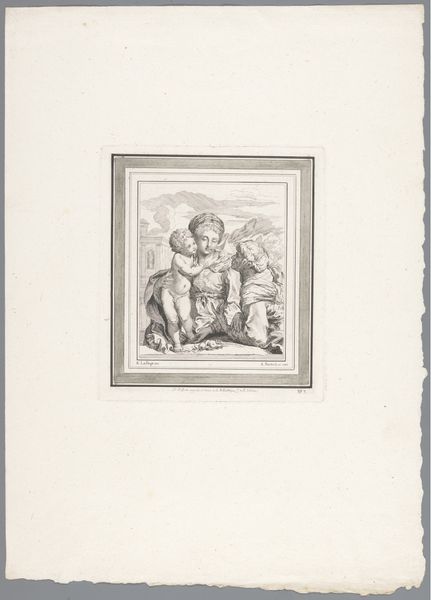
Reproductie van een geëmailleerde voorstelling van een onbekende vrouw door Jean Laudin before 1873
0:00
0:00
drawing, print, paper, ink
#
portrait
#
drawing
# print
#
figuration
#
paper
#
ink
#
line
#
genre-painting
#
academic-art
Dimensions: height 135 mm, width 110 mm
Copyright: Rijks Museum: Open Domain
Editor: This is a reproduction of an enamelled representation of an unknown woman by Jean Laudin, created before 1873. It's rendered in ink on paper, and the strong use of line work gives it a compelling texture. What draws me in is the rather melancholic feel of this portrait, and the obvious attention to detail in what seems like very painstaking artistic labour. What do you see in this piece? Curator: Given its medium – a print based on an enamel work – it speaks volumes about 19th-century reproductive technologies and their democratizing potential. It invites questions about who had access to portraits and how skill hierarchies related to "original" versus reproductive media affected how the artwork was valued. What was enamel production like at that time and what socio-economic status does that imply, what are the implications of reproducing this for the print medium, and how did each material contribute to shaping viewers’ experience of gender representation and perhaps idealize femininity? Editor: That’s fascinating, it really opens it up. I hadn’t thought about the social implications of reproducing an enamel portrait as a print. So, by reproducing it, access was widened, but something was also inherently lost in translation from the initial artistic labour, which of course, also affected access and value? Curator: Precisely. And remember, materials hold embedded value. The choice of ink and paper, their accessibility compared to the expensive enamel process, shifts our focus to broader issues like the changing social roles for women in the workforce who engage in mass printing, labor dynamics, the economics of art consumption and accessibility of luxury for the middle class at the time. Did Jean Laudin control every step in the manufacturing, or were others responsible for creating this image? That’s a major question here. Editor: I see what you mean! Viewing this artwork through a materialist lens really emphasizes how the means of production shaped the experience and its meaning. Thank you for that illuminating view! Curator: Gladly. Always consider labor and materiality—the hows and whys of making impact art appreciation profoundly!
Comments
No comments
Be the first to comment and join the conversation on the ultimate creative platform.
